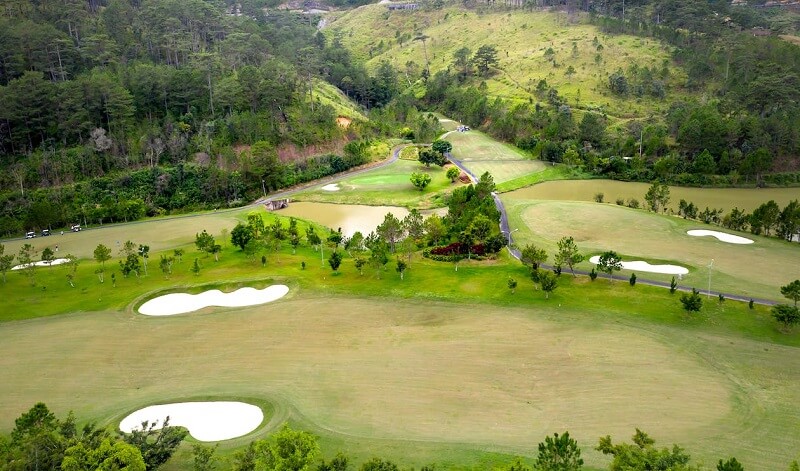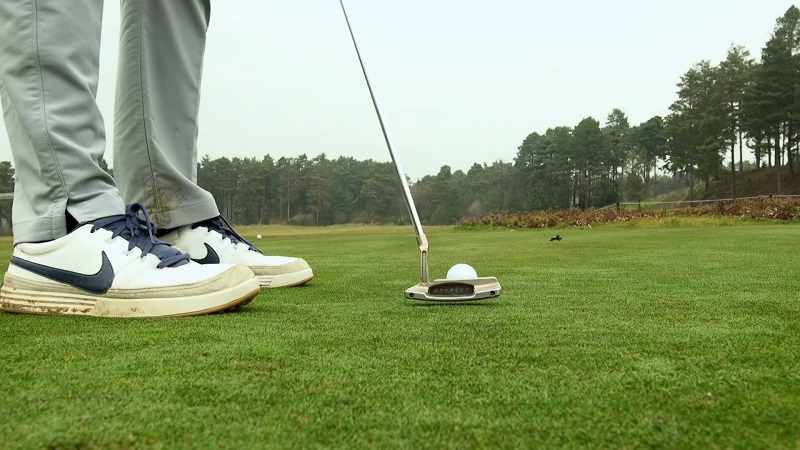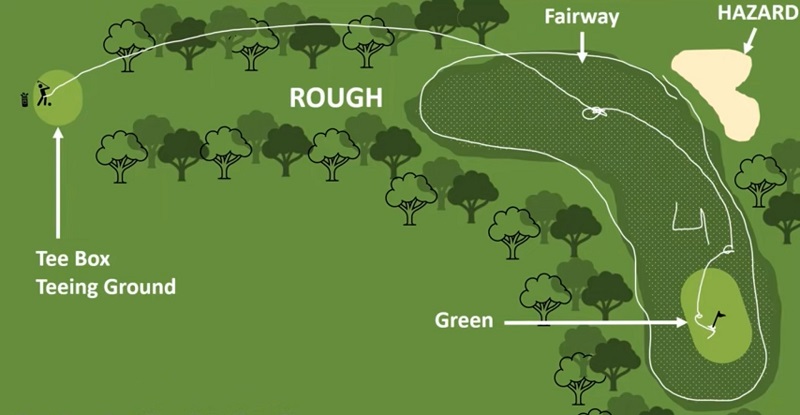Golf is a classic, beloved sport that brings together people of all kinds. Whether you’re an avid player or just a fan, recognizing the main components of this game will make it much more enjoyable for you. One of these fundamentals includes knowing what comprises a fairway in golf – and understanding how to play from them.
In this post, we’ll explore the basics like what is a fairway in golf and the different types of grasses that are used on the fairways. So get ready to step up your golf knowledge with these essential facts about fairways.
What Is A Fairway On The Golf Course?
The fairway is an area between the tee box and the putting green, an essential component of any golf course, providing golfers with an optimal surface for striking the ball and progressing toward the green. With a width typically ranging from 30 to 50 yards, the fairway ensures players have an adequate challenge while traversing the course.
One of the key features of the fairway is its meticulously maintained turf, which features a tightly trimmed grass surface. This relatively short grass not only enhances the aesthetic appeal of the golf course but also offers players a significant advantage when striking the ball, as it allows for cleaner contact and a more predictable trajectory than taller grasses found in other sections of the course.
Why Is It Called Fairway?
Surprisingly, the widely recognized term “fairway” in the context of golf is not officially penned down in the Rules of Golf handbook. Instead, the original term utilized by golfers in the early days was “fair Green.” The familiar term “fairway” only gained traction in the golfing communities during the 1800s, replacing the original one.
It is worth noting that groundskeepers had no means to establish a smoother playing terrain on the golf course before lawn mowers.
Originally, “fairway” held a nautical connotation, signifying a “navigable channel or a customary course.” This aptly aligns with its current meaning in golf, as a fairway represents the golfer’s route from the tee box toward the putting green.
What Type Of Grass Is Usually Found On A Fairway?

Golf course grass is specially selected to ensure quality ball roll and successful strokes. It must be resilient enough to endure large amounts of foot traffic and golf club strikes. The grass type of choice will depend on the climate of the course, considering the heat, cold, rain, and snow the grass may encounter.
Depending on the climate of the golf course’s location, several popular fairway varieties may include:
Tifway 419 Bermuda grass
Tifway 419 Bermuda grass, often called Bermuda grass, has gained significant traction and popularity in recent years thanks to its adaptability and resilience. With its origins spanning continents such as Europe, Australia, Africa, and Asia, this versatile grass species has found a new home in the Americas.
Boasting rapid recovery from damage, Bermuda grass is an ideal choice for high-traffic areas like fairways. Particularly well-suited for warmer climates, golf courses in the southern and southeastern United States have embraced this hardy turfgrass variety, benefitting from its ability to endure the heat. Furthermore, Bermuda grass is known for its drought resistance, making it an excellent option for regions prone to water scarcity, such as Florida and Georgia.
Zoysiagrass
A non-native grass species, it originally hails from the diverse continents of Asia and Australia and several Pacific islands. This versatile plant is known for its remarkable adaptability and ability to endure various temperature conditions while remaining resistant to weeds and diseases.
Beyond its resilience, zoysiagrass possesses the desirable trait of withstanding heavy foot traffic, making it an exceptional choice for golf course fairways and teeing areas.
Ryegrass
Ryegrass holds a unique and essential position in the agricultural sphere, particularly in New Zealand, where it serves as the principal grazing choice for livestock. This versatile grass species, found predominantly in cool summer regions in the United States, is recognized for its nutritional benefits and aesthetic appeal.
Notably, the lush fairways and greenery of the renowned Pebble Beach golf courses showcase the incredible landscape potential of Rye grass.
Bent grass
Bent grass, a versatile and resilient species, can be found blanketing the landscapes of nearly every country across the globe. Its impressive ability to withstand high foot traffic makes it particularly well-suited for golf courses, providing a lush, deep green canvas for fairways, teeing boxes, and greens. This grass is visually appealing, and its thick and springy texture enhances its functionality on finely-manicured playing surfaces.
Beyond golf, bent grass is also a luxurious option for residential lawns. This exceptional grass prospers best in regions with cool summers or coastal locations, such as the North and Mid-Atlantic coast and even the picturesque coastlines of coastal California.
Kentucky bluegrass
It may surprise many that the iconic Kentucky bluegrass is not indigenous to the state it is closely associated with or native to North America. Interestingly, the Spanish Empire introduced this grass to Kentucky and several other varieties.
As an integral part of Kentucky’s landscape today, this resilient grass exemplifies non-native species’ adaptability and potential to influence the environment they are introduced to.
What Are The Standards For The Fairway On The 18-Hole Golf Course?
To maintain a consistent playing experience across the expanse of an 18-hole golf course, it is essential to adhere to specific standards for the fairway. These standards help create a constant challenge for players of all levels and ensure proper maintenance for years of enjoyable play.
One of the primary aspects considered is the width of the fairway, which is determined by the course’s design, style, and inherent difficulty. Wider fairways are more accommodating for amateur golfers, while narrower ones provide an increased challenge for skilled players.
Additionally, fairway grass height significantly shapes the course’s conditions, with the idea being maintained between 3/8 and 3/4 inches depending on the type of grass used. This results in a perfect balance of providing a smooth and fast surface for the ball’s roll while ensuring adequate traction and stability for golfers’ footing.
Furthermore, the overall health and consistency of the fairway grass are crucial to preserving the visual appeal and playability of the golf course. This entails regular maintenance and adherence to a well-timed aeration, irrigation, and fertilization schedule.
Is Golf Fairway The Same As Golf Green?

As a golfer, it’s crucial to understand the difference between a golf fairway and a golf green. These terms, while both pertaining to the golf course, hold distinct implications regarding gameplay and course management.
The fairway refers to the meticulously manicured area between the tee box and the green, providing golfers with an optimal surface to make their shots as they progress toward the hole. The fairways’ well-groomed grass allows for better ball control, rewarding players for accurate and strategic drives.
Conversely, the green comprises the area surrounding the hole, characterized by its incredibly short grass and a smooth, consistent surface suitable for precise putting.
Is A Tee Box Considered A Fairway?
A tee box is not considered a fairway. The fairway starts at the tee box and ends at the green. It is usually made up of short grass and is the ideal spot for golfers to hit their shots.
Common Mistakes Made When Aiming To Hit The Fairway
Aiming to hit the fairway with a golf ball is easier said than done, and mistakes can be frustrating. It is common for them to make the same mistakes repeatedly instead. However, common errors while attempting this feat can often be corrected with practice and knowledge.
Among these errors are selecting a club that is too strong or weak for the shot, swinging at an improper angle, and failing to adjust as conditions change during the round.
The most common mistake when aiming to hit the fairway is incorrect ball positioning; this results in a lack of distance, slices and pulls. Having an unbalanced setup line at the address also creates these issues.
An incorrect posture and grip pressure can also cause inaccuracies on both long game shots across the course.
To maximize your chances of success with this technique, it is important to assess the shot difficulty and select the most appropriate club; stand correctly while keeping good posture through a balanced swing; and pay close attention to the wind, temperature and other environmental factors that can affect your accuracy.
With preparation, commitment, and practice, you will soon be hitting more shots out of the rough and onto your intended target— the fairway!
Final Thoughts
To conclude, the fairway is an important part of any golf course and understanding its name, purpose and what is used on it can be beneficial for any golfer’s game. You can improve your overall play by understanding how gases come into play when caring for a fairway.
We thank readers for joining us and learning more about the fairway’s peculiarity. From here, we hope you are equipped with the knowledge to help you take more pleasure in the sport that so many love. Have fun out there!


